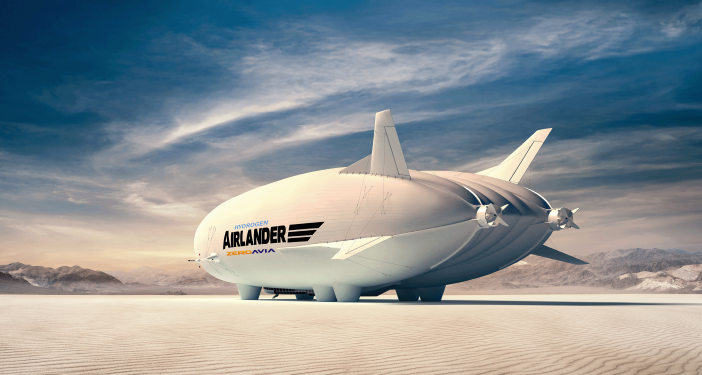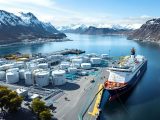
Hydrogen Fuel Cells Power Airlander 10: A New Era for Sustainable Airships
November 12, 2025When you imagine a zero-carbon future in the skies, you probably think of sleek electric jets or swarms of drones. But what if an old-school hybrid airship got a high-tech reboot? On 10 November 2025, Hybrid Air Vehicles and ZeroAvia announced they’re teaming up to outfit the Airlander 10 with four cutting-edge hydrogen-electric propulsion systems. Their goal is a bold one: slash operational emissions by up to 90% and put zero-emission technology front and center in short-haul aviation.
It’s easy to picture airships as relics—those grand zeppelins of yesteryear fading from view after headline-grabbing mishaps. But HAV has breathed new life into the concept, swapping out canvas and wood for modern composites, digital flight controls and clean power sources. What started as a military surveillance testbed in the 2010s morphed into a commercial contender thanks to a mix of public grants and private cash. Now, with ZeroAvia on board, it’s poised for its greenest chapter yet.
Decoding the Technology
At the heart of this venture are hydrogen fuel cells paired with electric motors. High-pressure hydrogen tanks feed the fuel cells, where hydrogen meets air and sparks off electricity—emitting nothing but pure water vapor. That juice powers four whisper-quiet propellers, a massive upgrade over diesel-electric rigs when you’re cruising over cities or sensitive wildlife areas.
About 60% of the Airlander 10’s lift comes from helium buoyancy; the rest is all about aerodynamics once you’re moving forward. The upshot? Way less energy burned per ton-mile compared to your average turboprop. And while battery-only designs wrestle with heavy packs, this hybrid approach leans on hydrogen’s superior energy density for longer hops.
On the ground, the partnership is already pushing fresh ideas in hydrogen hubs and refueling. Think ruggedized dispensers that slot into existing aviation fuel farms, safe storage for high-pressure tanks, and slick protocols so turnarounds are fast and fail-safe. Nail these details, and you’ve got a template airports around the world can replicate.
Business and Environmental Impact
This isn’t some lab-only stunt. Both sides see clear commercial lanes. HAV’s lining up regional passenger shuttles, remote mine-site cargo runs and eco-surveys, while ZeroAvia’s decades of certifying hydrogen systems could fast-track approvals by 2026. When you mix their expertise, getting a type certificate might not be just a pipe dream.
From an emissions angle, the math is staggering. Hybrid Air Vehicles pegs carbon output at up to 90% lower than comparable turboprops or helicopters. Noise levels dip, too—these electric motors hum where pistons used to roar. Plus, no paved runway? No problem. Grass airfields, desert flats or icy strips are all fair game, opening doors for industries chasing sustainable energy goals without building million-dollar runways.
Regulators and airlines are under intense pressure to hit climate targets. Europe wants aviation emissions down 55% by 2030; North American states and provinces are drafting clean-fuel rules. That policy push creates a ready playground for projects that blend innovation and zero-emission technology.
Challenges and the Road Ahead
Of course, talk is cheap. Green hydrogen production is still spotty—if you want genuinely clean hydrogen, you need electrolysers powered by renewables. Building out high-pressure storage and refueling spots at regional strips will need serious cash and clear rules. And while helium is plentiful for now, it’s still a finite resource that demands careful management.
Then there’s public perception. The Hindenburg disaster left a lasting mark, so these teams are planning rigorous safety demos and community outreach. Training pilots, ground crews and emergency responders on hydrogen refueling and airship operations is a learning curve, too.
Yet both companies are bullish. Their 2030 vision is a fully zero-emission Airlander 10, ditching diesel backups altogether. At the same time, the lessons here could fuel hydrogen-electric conversions on commuter planes, helicopters and future urban air taxis. More flight hours mean more data, and that usually drives costs down—especially once hydrogen fuel cell production ramps up.
Whether you’re an aviation buff or an investor eyeing the hottest sustainable energy frontier, this collaboration feels like a turning point. It’s proof that hydrogen fuel cells aren’t just lab curiosities but ready to shine on radical platforms like the Airlander 10. If all goes well, we might soon see silent, buoyant giants crisscrossing the globe, leaving only water vapor and lower emissions in their wake.
At its core, this isn’t about romanticizing the past. It’s pragmatism. By blending proven helium lift with modern aerodynamics and a slick hydrogen-electric propulsion system, Hybrid Air Vehicles and ZeroAvia are sketching out a blueprint for cleaner, quieter skies. And honestly? That’s a sight I can’t wait to see.


 With over 15 years of reporting hydrogen news, we are your premier source for the latest updates and insights in hydrogen and renewable energy.
With over 15 years of reporting hydrogen news, we are your premier source for the latest updates and insights in hydrogen and renewable energy.